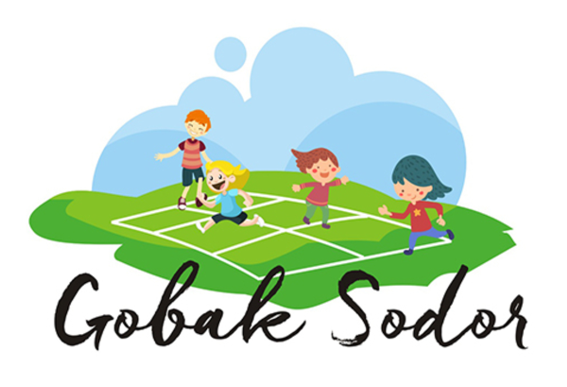Traditional Massallo Game Approach Model in Elementary School: Foot Reaction Speed in Badminton
DOI:
https://doi.org/10.51574/ijrer.v4i2.2964Keywords:
Badminton, Elementary School, Foot Reaction Speed, Massallo, Traditional GamesAbstract
This study aims to improve the reaction speed of the feet in badminton through the traditional massalo game approach in students of elementary school. The study employed Classroom Action Research, which involved two cycles of planning, action implementation, observation, and reflection. The population and sample of the study were all grade V students of elementary school 171 Pinrang, totaling 20 students. The results of the study showed a significant increase from the pre-cycle to cycle II. In the pre-cycle, 100% of students were in the less category (score < 80) with 0% completion. Cycle I showed an increase, with 50% of students achieving completion in the sufficient category (score ≥ 80-86). In cycle II, after changes were made to the Massaro game approach, every student (100%) completed the tasks in the sufficient category, with their average reaction time increasing by 35% and their active participation reaching 95%. In conclusion, the traditional massalo game approach has proven effective in improving the reaction speed of the feet in badminton while creating a positive and enjoyable learning experience for elementary school students.
References
Achille, C., & Fiorillo, F. (2022). Teaching and learning of cultural heritage: Engaging education, professional training, and experimental activities. Heritage, 5(3), 2565-2593. https://doi.org/10.3390/heritage5030134
Alzahrani, F. K., & Alhalafawy, W. S. (2023). Gamification for learning sustainability in the blackboard system: motivators and obstacles from faculty members’ perspectives. Sustainability, 15(5), 4613. https://doi.org/10.3390/su15054613
Arfanda, P. E., & Ramadona, S. (2020). Permainan tradisional sebagai pengembangan keterampilan motorik anak. Jurnal Ilmu Keolahragaan, 19(2), 81-93.
Ashari, M. A. (2021). Pengembangan permainan gobak sodor dalam meningkatkan motorik anak usia 5-6 tahun di TK Husnul Khotimah Jiken. Jurnal Porkes, 4(2), 134-139. https://doi.org/10.29408/porkes.v4i2.4850
Basri, A., & Muhammad, I. (2022). Pemanfaatan permainan tradisional Massallo dalam pembelajaran pendidikan jasmani di sekolah dasar. Jurnal Pendidikan Olahraga dan Kesehatan, 10(3), 215-226.
Bawazir, I. A., Fauzi, R. A., & Rukmana, A. (2024). Pengaruh Permainan Tradisional Gobak Sodor Terhadap Peningkatan Kelincahan Siswa Sekolah Dasar. Jurnal Porkes, 7(2), 696-705. https://doi.org/10.29408/porkes.v7i2.27294
Chen, S. L., & Liu, Y. T. (2023). Learning by designing or learning by playing? A comparative study of the effects of game-based learning on learning motivation and on short-term and long-term conversational gains. Interactive Learning Environments, 31(7), 4309-4323. https://doi.org/10.1080/10494820.2021.1961159
González-Peño, A., Simón-Chico, L., Prieto, L., & Franco, E. (2024). A technology-based experience to improve badminton skills: A challenge-based learning application. Proceedings of the Institution of Mechanical Engineers, Part P: Journal of Sports Engineering and Technology, 238(2), 126-133. https://doi.org/10.1177/17543371231185913
Heidorn, B. (2024). Teaching a Successful Badminton Unit: Skills and Strategies for Secondary Physical Education. Strategies, 37(1), 20-26. https://doi.org/10.1080/08924562.2023.2277107
Hermassi, S., Sellami, M., Bouhafs, E. G., Schwesig, R., & De Giorgio, A. (2019). Effect of verbal instruction on motor learning ability of anaerobic and explosive exercises in physical education university students. Frontiers in psychology, 10, 2097. https://doi.org/10.3389/fpsyg.2019.02097
Hussain, B., & Cheong, J. P. G. (2022). Improving gross motor skills of children through traditional games skills practiced along the contextual interference continuum. Frontiers in Psychology, 13, 986403. https://doi.org/10.3389/fpsyg.2022.986403
Jannah, S. R., Muharram, N. A., Herpandika, R. P., & Setiawan, I. (2024). Development of a traditional game “engklek” based on numeracy literacy to improve locomotor movements of elementary school students. Indonesian Journal of Research in Physical Education, Sport, and Health, 2(2), 49-57. https://doi.org/10.17977/um086v2i22024p49-57
Kunlasomboon, N., Wongwanich, S., & Suwanmonkha, S. (2015). Research and development of classroom action research process to enhance school learning. Procedia-Social and Behavioral Sciences, 171, 1315-1324. https://doi.org/10.1016/j.sbspro.2015.01.248
Kurniawan, W. P., & Zawawi, M. A. (2017). Pengenalan permainan tradisional GOTENG (Gobak Sodor dan Bentengan) untuk membangun karakter siswa sekolah dasar kelas atas. Jurnal SPORTIF: Jurnal Penelitian Pembelajaran, 3(2), 128-141. https://doi.org/10.29407/js_unpgri.v3i2.11889
Li, F., Li, S., Zhang, X., & Shan, G. (2023). Biomechanical insights for developing evidence-based training programs: unveiling the kinematic secrets of the overhead forehand smash in badminton through novice-skilled player comparison. Applied Sciences, 13(22), 12488. https://doi.org/10.3390/app132212488
Limbong, D. M. (2021). Pengaruh Latihan Dengan Lampu Reaksi Dan Shuttlerun Terhadap Kelincahan Gerak Kaki (Footwork) Pada Peserta Bulutangkis PB. Tj Prestasi Tebo. Indonesian Journal of Sport Science and Coaching, 3(2), 68-74. https://doi.org/10.22437/ijssc.v3i2.15621
Lin, K. C., Wei, C. W., Lai, C. L., Cheng, I. L., & Chen, N. S. (2021). Development of a badminton teaching system with wearable technology for improving students’ badminton doubles skills. Educational Technology Research and Development, 69, 945-969. https://doi.org/10.1007/s11423-020-09935-6
Lopes, V. P., Stodden, D. F., & Rodrigues, L. P. (2017). Effectiveness of physical education to promote motor competence in primary school children. Physical Education and Sport Pedagogy, 22(6), 589-602. https://doi.org/10.1080/17408989.2017.1341474
Luo, Y. J., Lin, M. L., Hsu, C. H., Liao, C. C., & Kao, C. C. (2020). The effects of team-game-tournaments application towards learning motivation and motor skills in college physical education. Sustainability, 12(15), 6147. https://doi.org/10.3390/su12156147
Madondo, F., & Tsikira, J. (2022). Traditional children’s games: Their relevance on skills development among rural Zimbabwean children age 3–8 years. Journal of Research in Childhood Education, 36(3), 406-420. https://doi.org/10.1080/02568543.2021.1982084
Ma’mun, A., Anggorowati, R., Risma, R., Slamet, S., & Anira, A. (2022). An Historical Overview of the Culture of Sports in Indonesia: Global Issues and Challenges for Future Indonesian Sports Development Policies. Asian Journal of Sport History & Culture, 1(2), 161-182. https://doi.org/10.1080/27690148.2022.2119091
Nathan, S. (2016). Badminton instructional in Malaysian schools: a comparative analysis of TGfU and SDT pedagogical models. SpringerPlus, 5(1), 1215. https://doi.org/10.1186/s40064-016-2872-3
Pradana, A. A. (2021). Strategi Pembentukan Karakter Siswa Pada Jenjang Pendidikan Dasar Melalui Mata Pelajaran Pendidikan Jasmani Olahraga Dan Kesehatan. PREMIERE: Journal of Islamic Elementary Education, 3(1), 78-93. https://doi.org/10.51675/jp.v3i1.128
Prasetio, P. A., & Praramdana, G. K. (2020). Gobak sodor dan bentengan sebagai permainan tradisional dalam pembelajaran penjasorkes berbasis karakter pada Sekolah Dasar. Pedagogi: Jurnal Penelitian Pendidikan, 7(1). https://doi.org/10.25134/pedagogi.v7i1.2858
Rustan, E., & Munawir, A. (2020). Eksistensi Permainan Tradisional Edukatif Pada Generasi Digital Natives. Jurnal Pendidikan Dan Kebudayaan, 5(2), 181-196.
Saleh, H. A., Hasyim, H., & Fauzan, M. M. (2024). Influence Learning Strategies to Enhance Physical Condition and Focus in Young Badminton Players During Matches. EDUKASIA: Jurnal Pendidikan dan Pembelajaran, 5(2), 311-322. https://doi.org/10.62775/edukasia.v5i2.1429
Shi, A., Wang, Y., & Ding, N. (2022). The effect of game–based immersive virtual reality learning environment on learning outcomes: designing an intrinsic integrated educational game for pre–class learning. Interactive Learning Environments, 30(4), 721-734. https://doi.org/10.1080/10494820.2019.1681467
Sholikin, M., Fajrie, N., & Ismaya, E. A. (2022). Nilai karakter anak pada permainan tradisional gobak sodor dan egrang. Jurnal Educatio Fkip Unma, 8(3), 1111-1121. https://doi.org/10.31949/educatio.v8i3.3035
Simonton, K. L., & Shiver, V. N. (2021). Examination of elementary students’ emotions and personal and social responsibility in physical education. European Physical Education Review, 27(4), 871-888. https://doi.org/10.1177/1356336X211001398
Subagio, R., Muhyidin, A., Leksono, S. M., & Jamaludin, U. (2024). Permainan Gobak Sodor dan Pembentukan Karakter dalam Pendidikan Jasmani Bagi Peserta Didik Tbsm. JIPIS, 33(1), 36-54. https://doi.org/10.33592/jipis.v33i1.4711
Syahruddin, S., & Suyuti, A. (2022). Analisis kebutuhan pembelajaran gerak dasar pada siswa sekolah dasar di Kabupaten Pinrang. Jurnal Ilmu Keolahragaan, 21(1), 67-78.
Taufik, M. S., & Pardijono, P. (2021). Implementasi model pembelajaran berbasis permainan untuk meningkatkan motivasi belajar siswa sekolah dasar. Jurnal Pendidikan Jasmani dan Kesehatan, 9(3), 243-254.
Varea, V., Gonzalez-Calvo, G., & García-Monge, A. (2022). Exploring the changes of physical education in the age of Covid-19. Physical Education and Sport Pedagogy, 27(1), 32-42. https://doi.org/10.1080/17408989.2020.1861233
Wang, C., Chen, X., Yu, T., Liu, Y., & Jing, Y. (2024). Education reform and change driven by digital technology: a bibliometric study from a global perspective. Humanities and Social Sciences Communications, 11(1), 1-17. https://doi.org/10.1057/s41599-024-02717-y
Yan, J., Jones, B., Smith, J. J., Morgan, P., & Eather, N. (2022). A systematic review investigating the effects of implementing game-based approaches in school-based physical education among primary school children. Journal of Teaching in Physical Education, 42(3), 573-586. https://doi.org/10.1123/jtpe.2021-0279

Downloads
Published
How to Cite
Issue
Section
License
Copyright (c) 2025 Sulham Sukardi, Suwardi Suwardi, Muh. Adnan Hudain, Ahmad Adil, Fahrizal Fahrizal

This work is licensed under a Creative Commons Attribution-ShareAlike 4.0 International License.









1.png)













